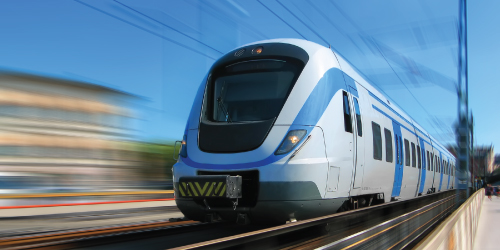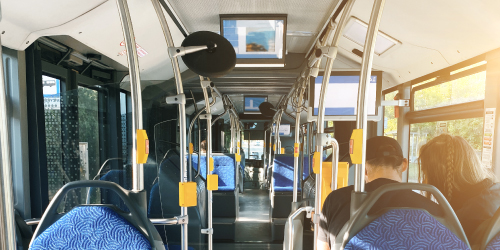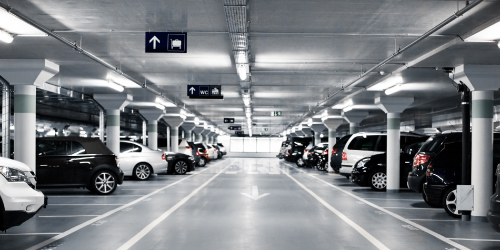Updating Aging Infrastructure and Leveraging IoT
Local government is a 24/7 enterprise. Constantly changing dynamics and daily emergencies have always pressured city governments to be agile and cost-efficient. In the digital age, citizens expect cities to respond to their needs and mandates quicker than before, and they want to access city services conveniently — whenever and wherever. Of course, citizens also still expect cities to make the most of their tax dollars.
Gartner notes, "Urban challenges such as safety and security, traffic congestion, aging infrastructure, and even responses to climate change and disasters have often been addressed by silo-based departments. However, city governments are increasingly moving toward smart city solutions that leverage IoT technologies."
TABLE OF CONTENTS
Updating Aging Infrastructure and Leveraging IoT
What is a Smart City, Exactly?
The Benefits of 4G LTE and Software-Defined Networking in Smart Cities
At A Glance: Popular Smart City Technologies
Public Railways
Schools
Police Vehicles
Fire Apparatus
Video Surveillance
Public Bus Lines
At A Glance: Emerging Applications
Pop-Up Networks
Data Analytics
Smart Parking
Smart Public Transportation
Smart Police Vehicles
Smart Water
Achieving a Smart Water Future
4G LTE Networks Revolutionize Cost-Efficiency
Next-Generation WAN
Wireless Connectivity Improves Communities In A Variety Of Ways
Mobile Devices
Sensors Everywhere — For Everything
Remote Controls for Streamlined Processes
Surveillance for Improved Public Safety
Data on the Move
How Everyday Ordinary ‘Things’ Are Using Cellular Gateways to Become Smart
Industry Improvements with IoT
What is a Smart City, Exactly?
Smart cities encompass six essential sectors that need to work together to achieve a common goal of making a city more livable, sustainable, and efficient for its residents. These sectors are smart energy, smart integration, smart public services, smart mobility, smart buildings, and smart water.
Building smart cities upon the six sectors is crucial for sustainable global growth, but the financial, logistical, and political challenges are enormous. The conversations about the growth of smart cities have historically been dominated by large IT companies that focus on analyzing "big data" taking a top-down, software-centric approach. However, when it comes to the modernization of hundred-year-old systems like water distribution or the power grid, advanced software and networking capabilities are rarely broad enough in scope to make the necessary impact.
Conversely, a bottom-up approach to smart city development is based on the belief that the rapid migration to cities will tax municipal infrastructures beyond their breaking points. The cities that succeed in transitioning to "smart" operations will be those that improve their critical systems and infrastructure at a fundamental level and integrate their systems through advanced technology. Lastly, smart cities will continuously use advanced monitoring and analytics to measure and improve performance.
Smart city projects that take an infrastructure-first approach include:
- Setting the vision and roadmap for an efficient, livable, and sustainable city
- Combining best-in-class hardware and software to improve operating systems
- Bringing in integration for city-wide operational and informational efficiency
- Adding innovation as a foundational element of planning and operations
- Driving collaboration between the most well-suited global and local players, as well as across the entire smart city value chain
The Benefits of 4G LTE and Software-Defined Networking in Smart Cities
For many governments, 4G LTE — with 5G on the horizon — and cloud-based network management provide the reliability, visibility, and flexibility necessary to keep Smart City edge technologies connected to agency networks at all times.
Today, leading cities are using wireless and SDN to provide connectivity for their Smart City applications.
Cities and public-sector IT personnel must balance a unique combination of community expectations, budget limitations, and employee capacity. As cities become smarter and more connected, community members are financially responsible for growth. At the same time, it is common for cities to struggle with budgets and for elected officials to be held accountable by the public to ensure they invest wisely and in ways that have a noticeable impact.
As technology continues to evolve, cities are evolving in parallel. According to Gartner, a Smart City is "an urbanized area where multiple sectors cooperate to achieve sustainable outcomes through the analysis of contextual real-time information shared among sector-specific information and operational technology systems."
Smart Cities use technology to collect data, analyze information, share results with different departments, and use those results to drive improvement. They understand how the combination of innovation, technology, and collaboration can genuinely improve the quality of life and the economic well-being of their citizens and businesses.
The effects of 4G LTE and Software-defined Networking (SD-N) have been profound within this context. The potential for connected people, places, and things has enabled cities to provide a deep and vast array of services in many different areas.
Today cities are connecting:
- K-12 public schools, students, and faculty
- Public recreation centers and other amenities, such as golf courses
- Fare boxes, passenger WiFi, digital signage, and surveillance cameras on buses in major metro systems
- Cameras and tracking sensors/RFID tags on school buses
- Police cars, laptops, body-worn cameras, dash cameras, evidence collection kits, and even IoT sensors to a city's secure, private network
- Mobile search and rescue vehicles, particularly those in remote locations
- Code enforcement and building inspector vehicles, which traditionally serve as remote offices for city employees and contractors
- Ambulances, stroke kits, and first responders to doctors' local hospitals
- Traffic cameras, traffic light controllers, and cameras at intersections
- Public trash compactors and recycling bins, allow cities to be more efficient in how often receptacles need to be emptied
- Digital signs that provide live route maps for public transportation user
- Payment kiosks for citizens wishing to pay for city services out in the field
- Election machines at precinct locations
- Sensors for large public events that can be used to look for any kind of public safety threat
At A Glance: Popular Smart City Technologies

Public Rail

Schools

Police Vehicles

Fire Apparatus

Video Surveillance

Public Bus Lines
Vehicle tracking, telematics, real-time route data for riders, passenger WiFi, onboard CCTV surveillance, and digital fare boxes are among the many connected technologies used on today's metro buses. Transit fleet managers also use cloud management tools to make firmware, configuration, and security updates without bringing every vehicle to headquarters.
At A Glance: Emerging Applications
Pop-Up Networks
A few cities are utilizing wireless Internet to provide temporary connectivity during elections. The Board of Elections can quickly set up a wireless "pop-up" network just for Election Day, and voters use computers (which can also produce a paper ballot to guard against potential tampering) to cast their votes.
Voters enjoy the convenience and faster reporting of results, while the city benefits from a more efficient elections process.
Data Analytics

Smart Parking
Smart parking is another application with a promising future. Cities seeking to limit the traffic and pollution impact of drivers endlessly searching for parking often use Internet-connected sensors and meters to update parking maps in real time. Drivers access data through a cloud application to quickly locate open parking spaces.
Without reliable 4G LTE connectivity and devices such as routers that can withstand the elements and be updated through the cloud, cities may focus too heavily on becoming a Smart City without paying enough attention to the logistics needed to fully get there.
Smart Public Transportation
When cities fully implement reliable and secure 4G LTE and/or SDN solutions, the effects can be tremendous. The City of San Antonio understood the importance of becoming a Smart City and utilized 4G LTE to assist with traffic management. With more than 1.4 million people and further growth expected, transportation infrastructure is becoming increasingly critical to the city's quality of life. Its Traffic Management Center needed remote access to monitor key applications, troubleshoot problems, and adjust traffic flow mechanisms (such as timers) in real time. In a city of this size, manual adjustments were no longer a reasonable solution.
By installing Cradlepoint's cloud-managed routing platforms in nearly 700 traffic cabinets and utilizing 4G LTE, San Antonio now has constant connectivity for reliable access, streamlined network troubleshooting and real-time management, easy physical access, and the potential to scale up the network and applications.
Smart Police Vehicles
The City of Boise helped its police department advance the city toward Smart City status by updating its in-vehicle systems. The department upgraded its devices and implemented NetCloud Manager to enable central configuration, monitoring, and management. Whereas it previously took the city as many as 160 staff hours to complete network updates for the whole police cruiser fleet, it now takes approximately 5 minutes with remote cloud management.
The cost savings, the efficient use of officer resources, reliability, central network management, network flexibility, and future-proofing of these solutions allow the police department to evolve its technological infrastructure while demonstrating to the public its responsible use of valuable resources.

Smart Water
The World Health Organization reports that for the first time, the majority of the world's population lives in a city, and this proportion continues to grow with projections of 70 percent by 2050. Currently, around half of all urban dwellers live in cities with populations between 100,000 and 500,000 people, and almost 10 percent of urban dwellers live in megacities, which are defined by UN HABITAT as a city with a population of more than 10 million. The UN reports that by 2025, 1.8 billion people worldwide will soon be living in areas of complete water scarcity. This water scarcity crisis directly results from rapidly growing populations, increased water use and aging infrastructures in cities.
One of the city's critical infrastructure pieces is its water system. With populations in cities growing, water consumption will inevitably grow as well. The term "smart water" points to water and wastewater infrastructure that ensures this precious resource – and the energy used to transport it – is managed effectively. A smart water system is designed to gather meaningful and actionable data about the flow, pressure, and distribution of a city's water. Further, it is critical that the consumption and forecasting of water use is accurate.
A city's water distribution and management system must be sound and viable in the long term to maintain its growth and should be equipped with the capacity to be monitored and networked with other critical systems to obtain more sophisticated and granular information on how they are performing and affecting each other. Additional efficiencies are gained when departments can share relevant, actionable information. One example is that the watershed management team can automatically share stormwater modeling information, which indicates probable flooding zones and times based on predictive precipitation intelligence. The transportation department can then reroute traffic accordingly and preemptively alert the population using mass notification.
Water systems are often overlooked yet are critical components of energy management in smart cities, typically comprising 50 percent of a city's total energy spend. Energy is the largest controllable cost in water/wastewater operations. However, optimizing treatment plants and distribution networks has often been overlooked as a source of freeing up operating funds by cash-strapped municipalities. Once facilities are optimized and designed to gather meaningful and actionable data, municipal leaders can make better and faster decisions about their operations, resulting in up to 30 percent energy savings and up to 15 percent reduction of water losses.
Water loss management is becoming increasingly critical as supplies are stressed by population growth or water scarcity. Many regions are experiencing record droughts, and others are depleting aquifers faster than they are being replenished. Incorporating smart water technologies allows water providers to minimize non-revenue water (NRW) by finding leaks quickly and even predicatively using real-time SCADA data and comparing that to model network simulations. Reducing NRW also allows municipalities to recover costs incurred in treatment and pumping – this can be significant. A medium-sized city with 100 million gallons per day of produced water that loses 25 percent (not an unusual amount) is incurring over $13 million per year in non-recoverable labor, chemical, and energy expenses.
On the wastewater side, there is a move by organizations such as the Water Environment Federation (WEF) to transform wastewater treatment plants into resource recovery facilities, which includes energy. Several examples of facilities now produce more energy than required for their operations and sell the excess energy back to the grid. While this is not practical for all treatment plants, it is a worthy ambition and can be facilitated by utilizing WEF's Energy Roadmap.
Achieving a Smart Water Future
One of the biggest obstacles to any capital-intensive project is access to funding. As cities and municipalities look to achieve smarter water, several options are available to help them get started. One very effective path is through leveraging energy-saving performance contracts (ESPCs).
ESPCs are a form of a public-private partnership (PPP or P3), a financial model that capitalizes on the flexibility and resources of the private sector to pay for energy-saving capital upgrades using future energy savings. The private financial community provides the initial investment, and services are delivered by energy service companies (ESCOs). The financier is paid from the accrued energy savings, with the ESCO guaranteeing the savings amount.
An ESPC starts with an energy audit. After identifying opportunities and quantifying the potential savings, the ESCO recommends any number of energy conservation measures, such as equipment retrofits, pumping optimization, demand monitoring and control, and/or load-shedding and cogeneration which will save energy through more efficient operations.
4G LTE Networks Revolutionize Cost-Efficiency
The influx of wireless connectivity, Machine-to-Machine (M2M) communications and the Internet of Things (IoT) has had dramatic effects on individuals' lifestyles and the day-to-day operations of companies. For the public sector, connectivity improves the well-being of the communities being served.
Appliances and devices on wireless networks make it possible to start a coffee machine, washer, dryer, heater, cooler, outdoor lighting, indoor lighting, music system, and a million other systems — all while in bed, on the road, or even out of town. It's a gateway to levels of efficiency and data that many of us never even dreamed of.
It's that type of efficiency and data that has cities, counties, states, and more imagining a smarter world. In many ways, it's already happening.
Next-Generation WAN
As 5G, often referred to as "next-generation WAN," becomes more readily available, Smart Cities will have both the opportunity and the obligation to explore how a drastic increase in speeds, combined with a drastic decrease in latency, can better empower their infrastructure, services, and personnel.
How cities become "smart" depends heavily on the wireless connectivity, devices, and networking infrastructure solutions available to and adopted by IT professionals and approved by city leaders. In essence, the effects of 4G LTE, 5G, IoT, and SDN are only as powerful as the solutions that utilize them.
Wireless Connectivity Improves Communities In A Variety Of Ways
Mobile Devices
- WiFi-connected laptops and tablets enable officers to do more of their work out in the field, giving officers more hours each day to focus on keeping communities safe.
- First responders use 4G LTE for mission-critical communications, consolidating multiple agencies' frequencies on one device.
- Connected school buses enable educators to foster in-vehicle learning during field trips, trips to sporting events, and more.
Sensors Everywhere — For Everything
Cities, counties, and states are using sensors to acquire more information and make better resource decisions for their constituents:
- Smart apparel with embedded sensors monitor firefighters' location, body position, heart and respiratory rates, and body temperature.
- Public-sector administrators avoid emergencies, reduce emissions, and save money by monitoring the structural integrity of buildings, bridges, and dams.
- Cities use sensors to track which streets have been plowed after snowstorms.
- Environmental departments access real-time readings of pollution levels, wildlife counts, and water levels.
Remote Controls for Streamlined Processes
Remote management saves valuable time and ensures that key data leads to improved cost-effectiveness:
Real-time updates regarding power, heating, and cooling usage allow organizations to regulate their in-office controls as needed.
Water managers use SCADA (coded signals over communication channels to remote equipment) to remotely collect and analyze water samples, predict usage patterns and challenges, control valves, and more.
Entities that place sensors in streets and traffic signals use data to guide traffic patterns in a fruitful way for local commuters.

Surveillance for Improved Public Safety
Wireless technology enables self-contained surveillance cameras that gather important information:
- Law enforcement agencies use dashboard and body cameras to monitor and record encounters between officers and the public.
- Cameras enable law dispatchers to remotely examine incident scenes in real time to accurately determine the right number of officers to deploy.
- Police use cameras to remotely spot stolen vehicles, theft, illegal dumping, and suspicious activities.
Data on the Move
For years people have been buzzing about the concept of "smart roads," an infrastructure that could eventually lead to driverless cars. We're not there yet, but the surfaces we drive on are becoming a lot less passive.
Sensors embedded in streets and traffic signals capture data that leads to decisions affecting congestion and energy use.
While still in the trail stage, solar-powered roads would transform transportation. Paved with durable solar cells, the average American highway could capture and store solar energy, which could then be used to operate digital traffic signage and charge electric vehicles as they pass by.
"Smart" applications are making our cities and states more and more efficient, but it's only possible with constant, secure wireless connectivity. With 4G LTE networks and best-in-breed routing solutions from Cradlepoint — the ability to keep stationary and mobile locations connected is easier than ever — enabling the list of applications and improved efficiencies to continue to grow.
How Everyday Ordinary ‘Things’ Are Using Cellular Gateways to Become Smart
Internet of Things (IoT) deployments are expanding to a point where they are nearly becoming a requirement across industries. These “things” are defined as any device that can be connected to the Internet. Today, the term “smart” can be linked with an ever-growing number of things from phones, refrigerators, stores, restaurants, cars, to whole cities. The adoption of sensors, M2M technology, wireless connectivity, and data can advance the efficiency and productivity of things and systems that seemed commonplace just a few years ago.
With the innovation that wireless technology brings, city infrastructure can be configured to cut costs, improve communication, and strengthen public safety agencies. Retailers and restaurants can improve their customer experience while also collecting valuable sales data with beacon devices. Homes can become completely automated with smart products that offer convenience and security, and there are many more avenues that are leveraging automation and wireless technology.
Industry Improvements with IoT
Public safety agencies are finding new ways to utilize wireless technology to maximize productivity and minimize time spent on administrative duties that take officers away from the field, where they can serve the community.
Mobile reporting through devices like MDTs moves first responders away from paper-based systems and toward nearly real-time data communication — for example, from the EMT in the ambulance to the specialist at the hospital, for faster incident response times.
Additionally, body cameras can do much more than just take videos. They now send footage to the main office directly from the field, which helps improve officer safety and provides transparency to enhance the chain of command and public knowledge of law enforcement actions. Sensors in gun holsters and racks can also inform headquarters when a gun has been moved, alerting that the first responder may be in danger and in need of backup.
Restaurants
Smart Homes
With wireless networking, objects within a home can communicate with the homeowner’s smartphone, so regular activities like adjusting lights, appliances, thermostats, or surveillance — or even locking or unlocking the front door — can be done with the swipe of a finger.
The number of smart connected things in the world is on the rise, and IoT is already mainstream. Not only do the possibilities include improved business and city infrastructures but also improvements for our future. Many IoT deployments are focusing on initiatives to support the growth and health of our communities and safety of our citizens, such as cleaner air and water, smarter agriculture, reduced food waste, 24×7 connectivity for first responders, and more as we uncover the seemingly endless possibilities of IoT.
Cellular IoT Gateways

According to a report by Berg Insight, released in October of 2018, shipments of cellular IoT gateways are expected to reach 8.6 million by 2023. The report also states that Cradlepoint leads the market in annual IoT gateway revenues.
Cradlepoint’s COR Series IoT routers provide complete M2M/IoT network solutions with advanced security, multiple 4G LTE modem options, and secure remote cloud management. The semi-ruggedized 4G LTE router solution is ideal for an array of IoT and M2M use cases, including kiosks, ATMs, digital signage, remote monitoring, remote sensors and control systems, and smart city infrastructure automation.
About USAT
For over 25 years, USAT has provided mobile communications solutions for various retail applications across the USA. With our extensive catalog of world-class routers, gateways, and software designed for remote monitoring and management in even the harshest environments — you can count on us to get and keep you connected.
Better mobile connectivity translates to less manual equipment maintenance, reduced downtime, and an overall increase in your business's ROI. Contact the experts at USAT to learn how our wireless networking solutions can help meet your organization's exacting needs.
Share this Post














